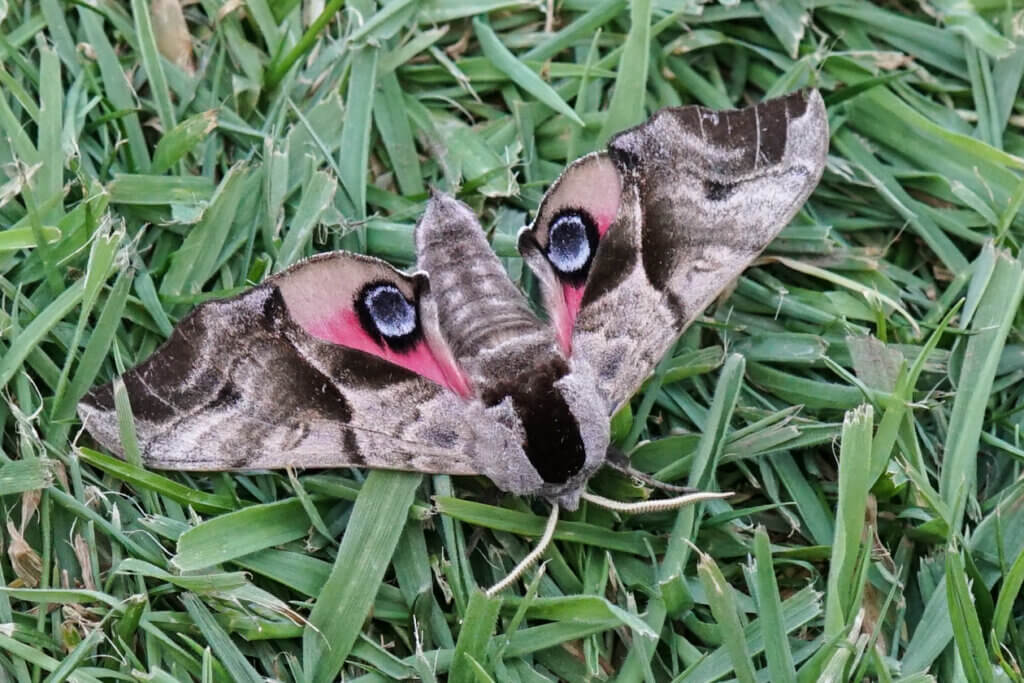
Social Distancing Week 13. Eyed Hawk-moth.
Paul writes: I found this dramatic looking creature last week in my garden moth trap. It’s the first Eyed Hawk-moth I’ve seen, so I was really excited. I was immediately impressed by the size, the wing length is around 40mm. When resting normally it’s fairly drab looking and only the size makes it noticeable. However when disturbed it opens out its wings and you get a fantastic pair of blue eyes on a pink background staring out at you. This must be a defence mechanism in the wild to startle potential predators and give the moth a chance to escape. It certainly gave me a shock.
They are common and widespread throughout lowland England and Wales, as far north as Cumbria. They are drawn to light and frequently found in gardens. The larval food plants are mainly willows, sallows and apples. It’s quite a nice thought that if you leave a garden light on you may find one of these beauties around.
[registration_form]
Lovely photo Paul of a lovely moth. I have seen this moth but rarely catch it in the moth trap here in Wales. Elephant Hawk, Small Elephant Hawk, Poplar Hawk, Lime Hawk and a Pine Hawk have all been found in the trap recently but not Eyed. The Pine is apparently new for the county ( Montgomery) and may be new for Wales as it is not on the Welsh moth list on the Butterfly conservation website. Nice as that is Pine isn’t as good a looking moth as Eyed.
I think more of us should get into moths and moth trapping it is such fun and adds hugely to our knowledge of local and natural distribution and numbers.
Thanks Paul. You are right about moth trapping. I am always amazed by the variety of moths that are around in gardens.
I’ve never seen this moth in my part of Wales but I have found the caterpillar so they must be around. We had a small elephant hawk moth in the house recently though and I found a lovely ruby tiger moth by the pond this afternoon.
I am new to moth trapping this spring and have found it very interesting especially as I am very fortunate to have an expert at the other end of an email to send photos to for his help with ID.
The diversity of moths is very bewildering when you start out and could put folk off unless, like me, they have some help (quite a lot of help in my case!).
Having caught poplar and elephant HMs a fortnight ago I found an eyed HM in the trap yesterday morning. What a super creature!
As well as moths I’ve found sexton beetles, several cockchafers, a caddis fly and mayflies too which all add to the interest.